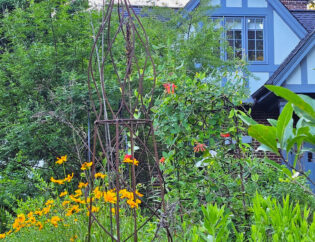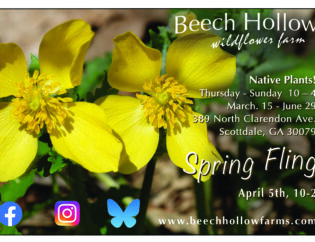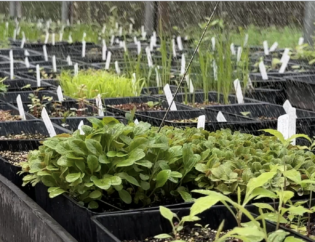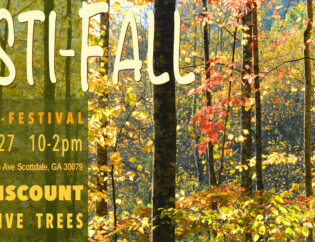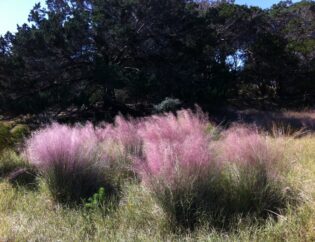This is a companion piece of sorts to my last post about leaf buds ('Buds are Swell'), but this is a more personal tale of a particular bud.
It all started in January when I planted a Bigleaf Magnolia (Magnolia macrophylla) in my backyard after reclaiming an area from the abundant English Ivy that the previous owner left me. In it's dormant state the young tree looked like a bare branch with a pointed end sticking out of the soil. That pointed end was a bud.
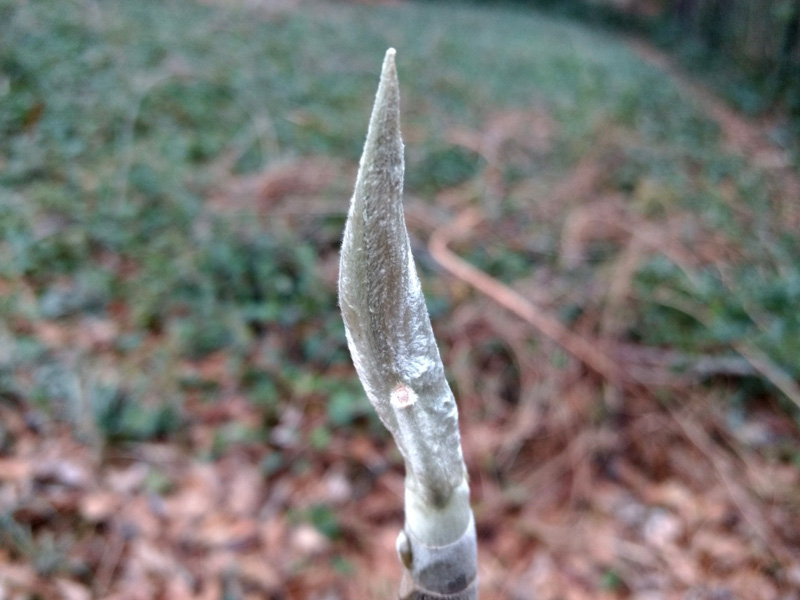 Covered in insulating hairs, the bud rode out a few snowfalls and numerous freezes until the temperatures began to rise. Temperature dependent reactions started occurring inside the bud and it began to swell. Cells differentiated and divided to become the specialized structures that make up a leaf. Eventually the finite space inside the swelling bud ran out and it split open to unfold and unfurl the leaves that had formed within.
Covered in insulating hairs, the bud rode out a few snowfalls and numerous freezes until the temperatures began to rise. Temperature dependent reactions started occurring inside the bud and it began to swell. Cells differentiated and divided to become the specialized structures that make up a leaf. Eventually the finite space inside the swelling bud ran out and it split open to unfold and unfurl the leaves that had formed within.
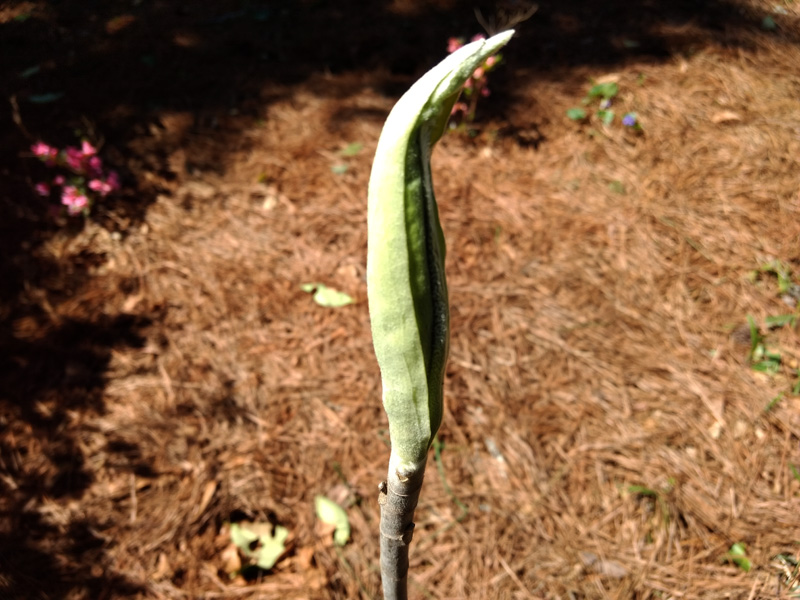 In this particular case, those leaves that started in that tiny 2" long bud can easily become 24" long and 10" wide. Sadly, these leaves were denied that chance. Some (literal) rat bastard chewed them right off the stem a few days after the above photo was taken.
In this particular case, those leaves that started in that tiny 2" long bud can easily become 24" long and 10" wide. Sadly, these leaves were denied that chance. Some (literal) rat bastard chewed them right off the stem a few days after the above photo was taken.
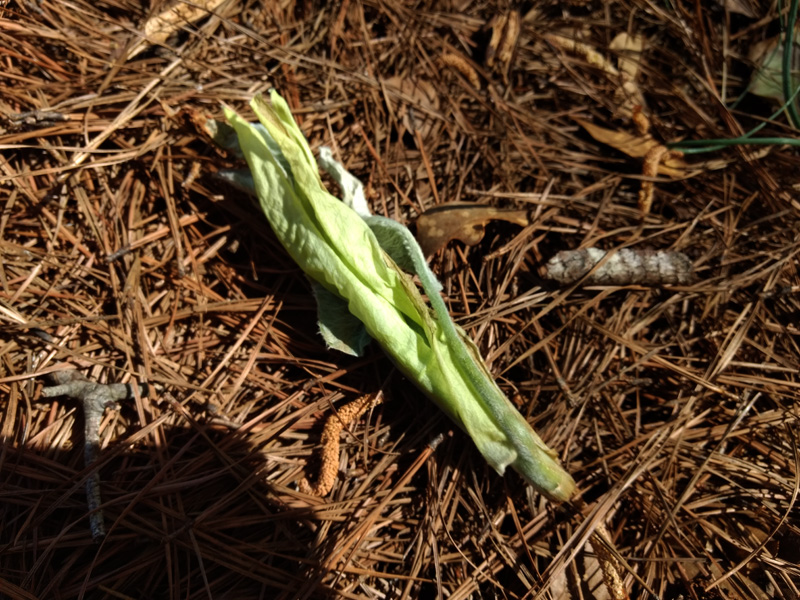
I found it on the ground near the base of the stem. He didn't even eat it, probably because the leaves were too fuzzy.
After I got over my shock and anger I decided that the least I could do is study the remains and hopefully learn something from it. I discovered an incredibly complex arrangement of multiple leaves folded and rolled around each other inside that relatively tiny bud.
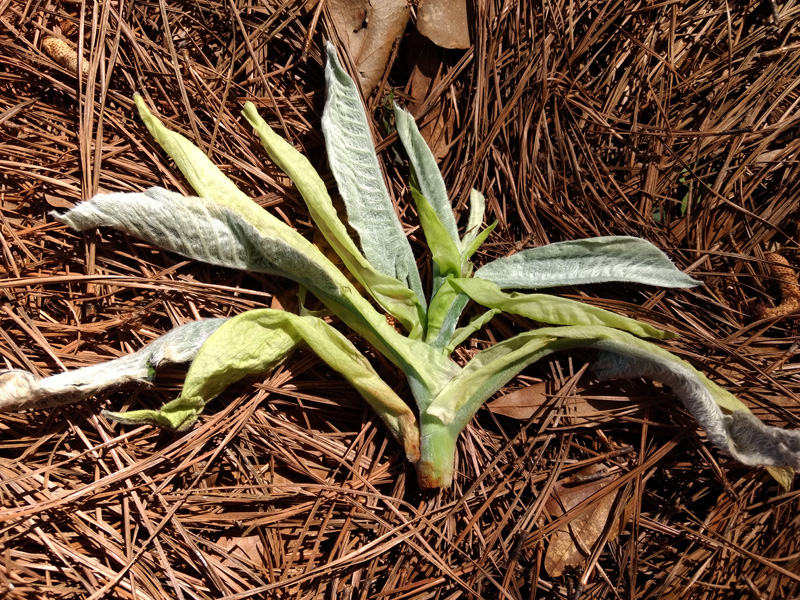
The repeating pattern of: sheath, leaf, fold and enclose a sheath, leaf, fold and enclose...... led me to unfold and arrange 7 separate leaves for the above photo. Even that tiniest leaf at the top is folded around an even tinier sheath that I would have needed a scalpel and tweezers to open, but I'll bet that wasn't even the last one in the sequence. Thinking about how those all formed in three dimensions inside of that bud was pretty mind boggling. 'Natural Origami' was my first thought and I haven't come up with anything better.
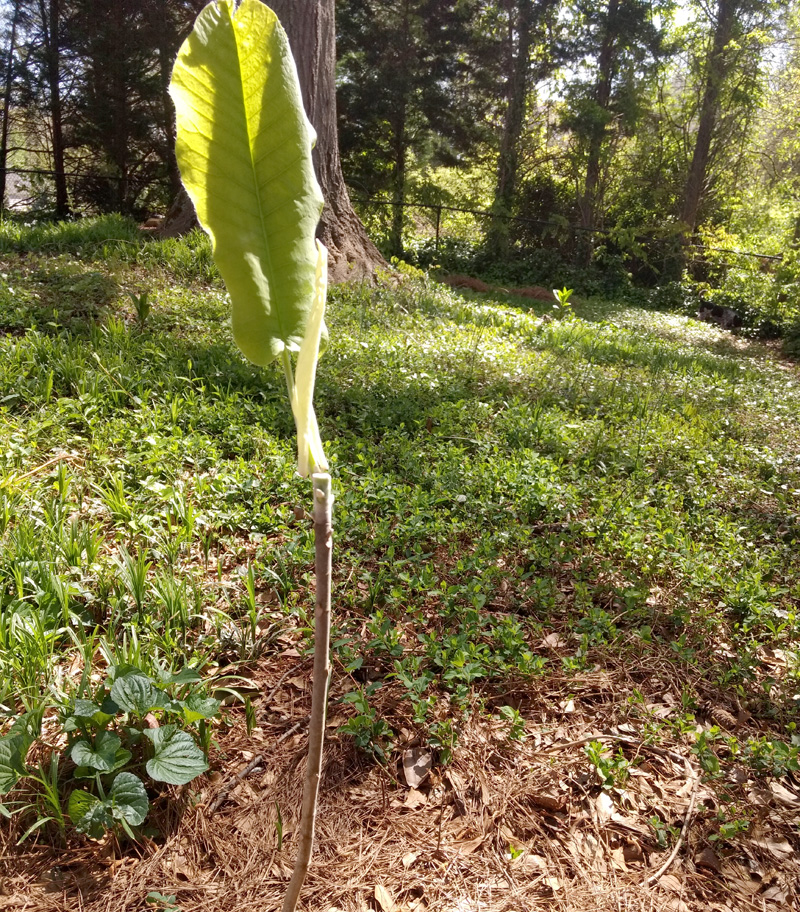
Fortunately the tree was left with one leaf to try to feed itself. Even if it hadn't been left with that leaf, it had other back up plans. As I said in my previous post about buds, they start out as just a few hundred cells, so it's not really a big energy investment until they need to swell up into actual leaves. Almost all plants have multiple buds somewhere other than the apical bud at the tip. Depending on where they are located on the plant they can be called axillary or adventitious buds. They are the multiple redundancy backup plan that springs into action when something destroys the plant's new growth.
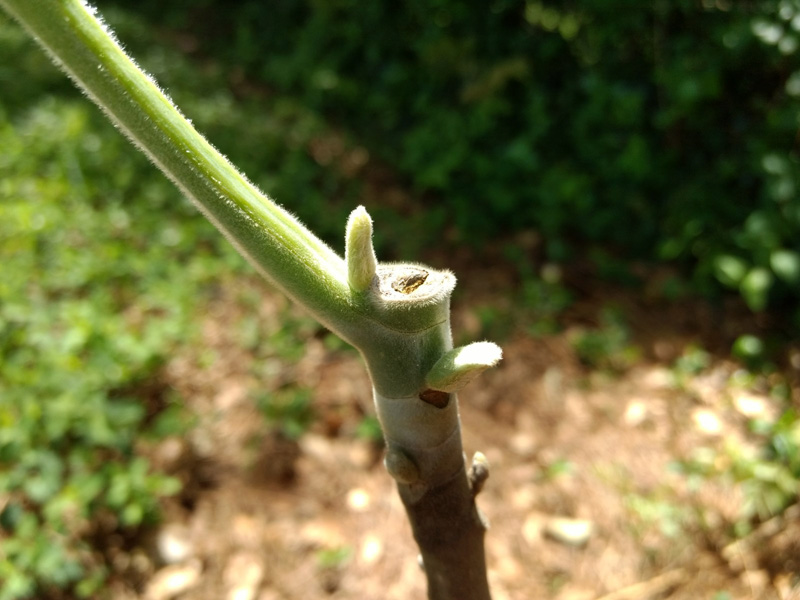 As such, this axillary bud (just take a second and realize that this bud was formed at the base of this leaf inside the big bud and that each of those 7+ lost leaves had a potential bud at their base too!) and several adventitious buds that you can see below it were activated by hormones to start the dividing and swelling process all over again.
As such, this axillary bud (just take a second and realize that this bud was formed at the base of this leaf inside the big bud and that each of those 7+ lost leaves had a potential bud at their base too!) and several adventitious buds that you can see below it were activated by hormones to start the dividing and swelling process all over again.
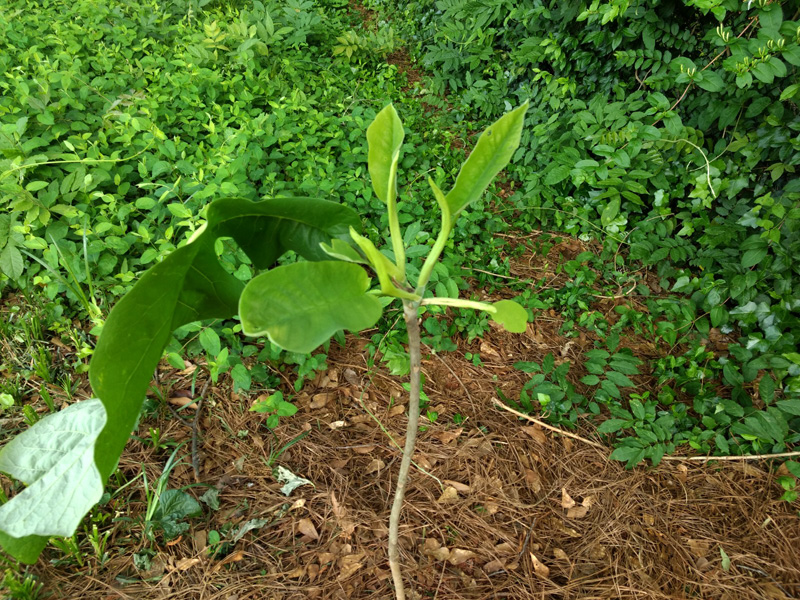
After a few weeks of swelling, they opened to reveal a few new leafy tops for this tree. You can see the now much larger and slightly tattered single leaf that remained on the left side of the frame. This whole process was a setback for sure, and this tree will not put on as much new height this year as it could have, but thanks to the latent buds it is still alive and green. It was also a reminder to me that if I pause and study a plant closely I always learn something new.
"Nature will bear the closest inspection. She invites us to lay our eye level with her smallest leaf, and take an insect view of its plain." - Henry David Thoreau (Oct. 22, 1839)

